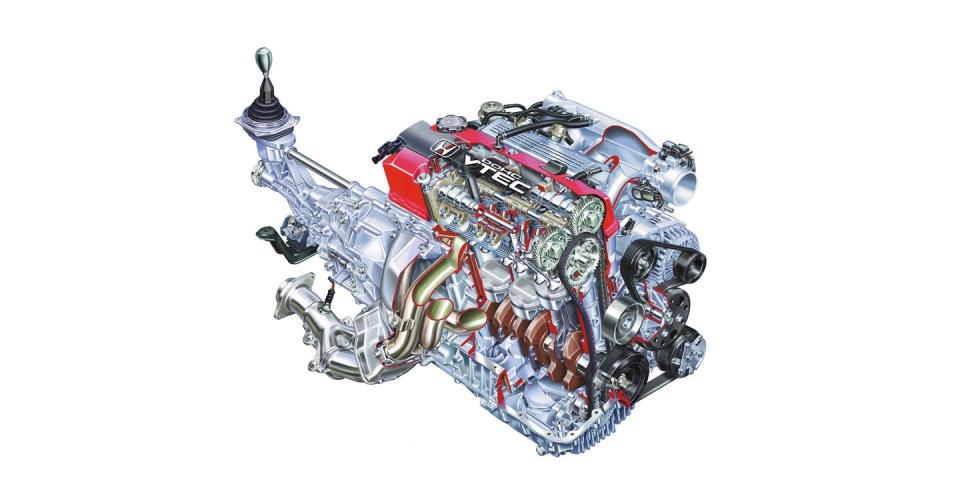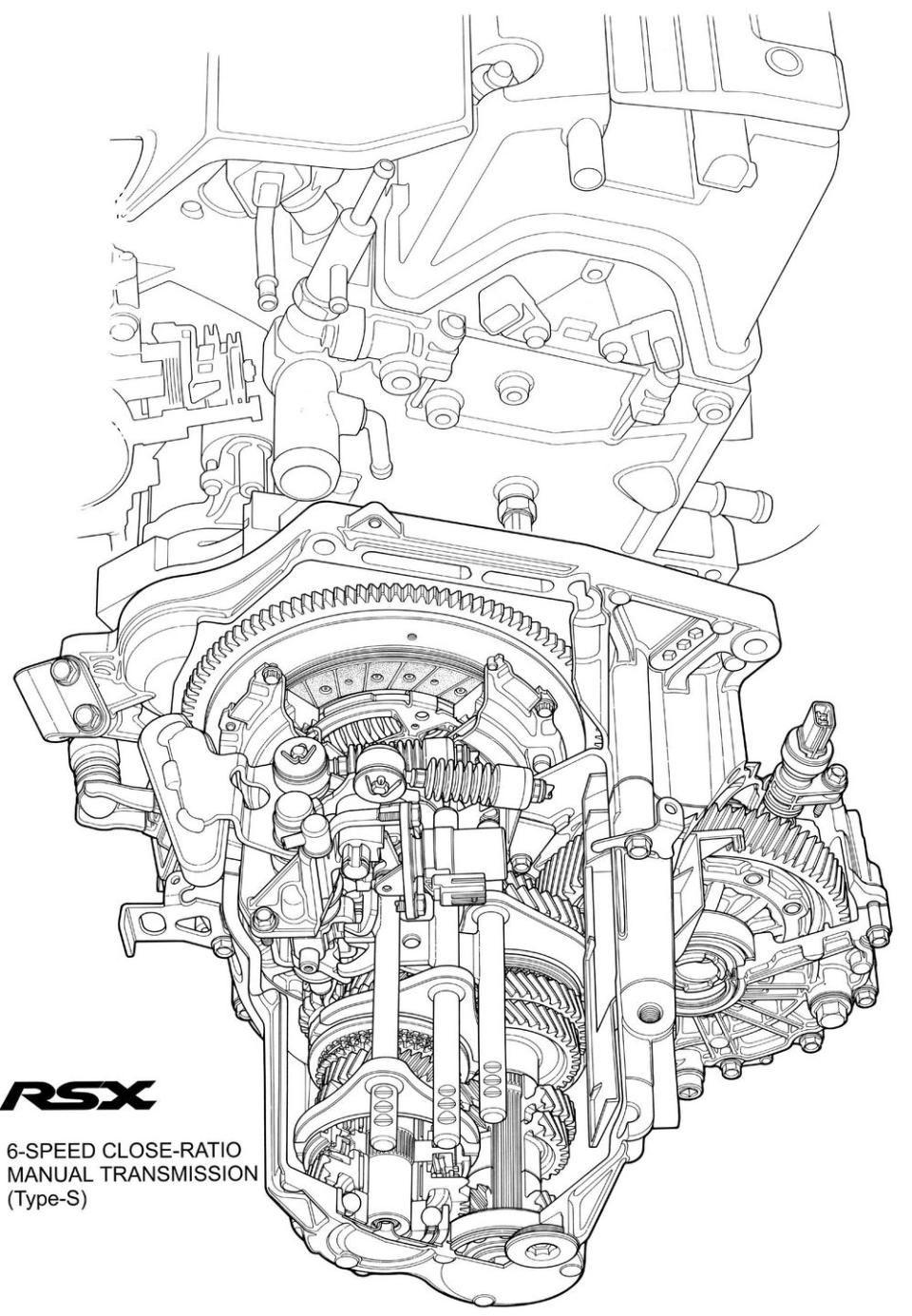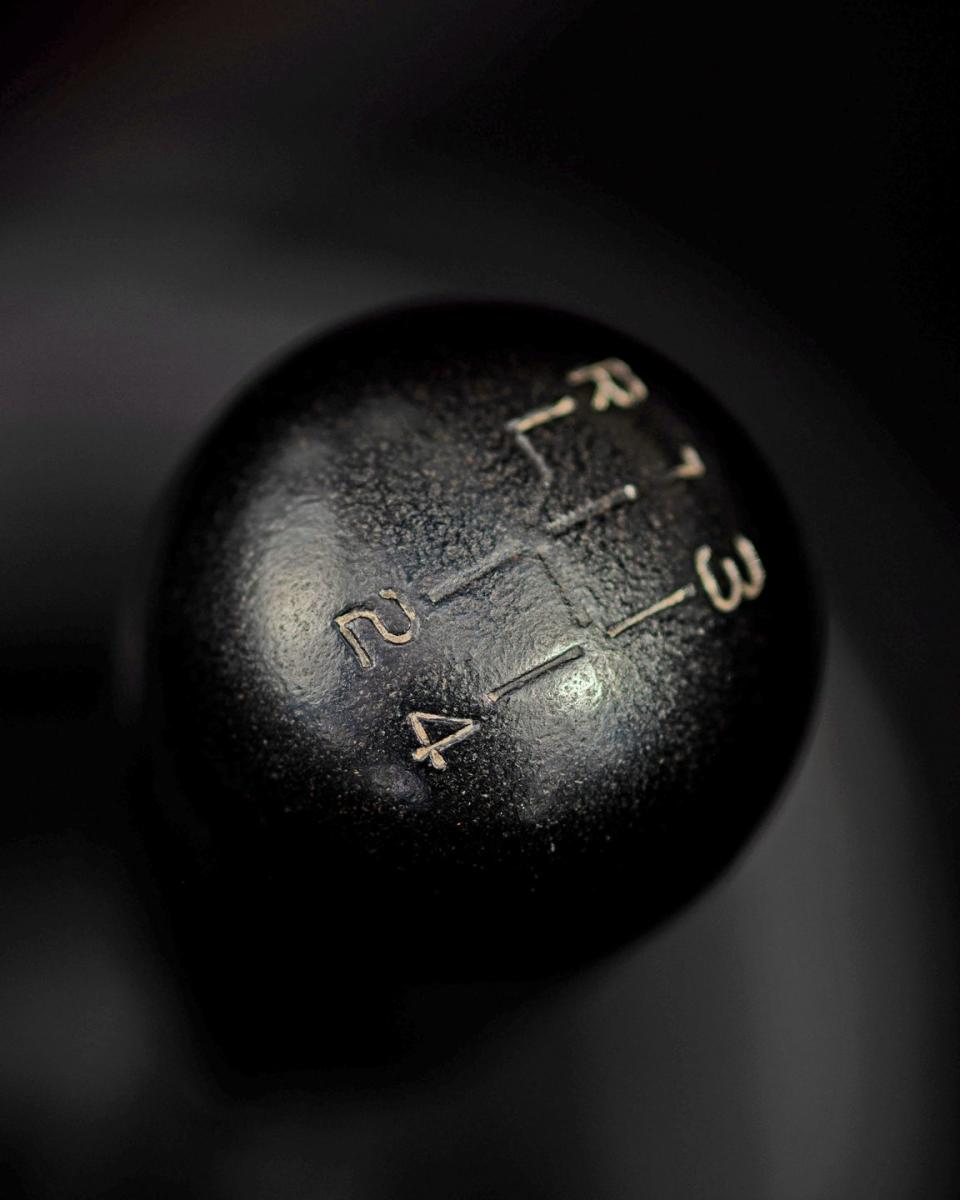Why Honda Shifters Are So Good, An Anthropological and Technical Exploration

Honda has long been the accepted standard for manual shifters. Sure, insert-automakers-name-here's manual might be great, but is it Honda good?
The company has made world-class manuals since the start. I recently had the opportunity to drive an S800 borrowed from the Lane Motor Museum in Nashville. An evolution of Honda's first ever road car—the S500 arrived in 1963 alongside the T360 kei truck—all the elements are already there. The short throw, the precise metal-on-metal feel, the accuracy, the ease of use, all present. It's so good, Gordon Murray is benchmarking the shift of his mechanically similar S600 for the GMA T.50.
The shifter is just as good in the S2000, but those are less impressive than Honda's other transmissions. Those cars are just a rod straight down into the gearbox, about as pure a connection to the transmission as you could ever get, but remember that the original S-Series and the S2000 are the only front-engine, rear drive cars Honda has ever built. The vast majority of its cars are transverse-engine, front-wheel drive, and only on rare occasions has it opted for longitudinal engines. With a transverse engine and gearbox, you can't just have a rod straight into the 'box, yet the shifters in cars like the original NSX, DC2 Integra Type R, and the newest Civic Type R offer completely unfiltered connection to the car. Even a basic manual Civic is wonderful to shift. Why?
The very simple and non-technical answer is that Honda, institutionally, cares about this stuff. "Shift feel has always been a focus at Honda," Civic Type R chief engineer Hideki Kakinuma tells Road & Track over email. That leads us to the technical answer to the question—Honda puts a lot of work into all the components that go into a transmission.

"Everything that they've done has just been top notch, from the shift handle all the way to the gearbox, and that makes everything," says Chris Weismann of Traction Products, a longtime racing-gearbox design firm. "You can have a great shifting gearbox, but if the linkage to the gearbox doesn't work, you're not going to get a good feel. That's part of the equation too."He adds that synchronizers are especially important for achieving great shift feel, too, and Honda's are particularly great, benefitting from great attention-to-detail, high manufacturing standards, and years of continuous refinement. "All the rough edges are not there, all the fits between mating parts are correct and well within their high standards of tolerance," Weismann says. "Basically, the quality control of the finished product is excellent, and so whatever [Honda makes] functions better when all working together."
For years, Honda used metal rods for its shift linkages, which are difficult to package and complicated to design, but easily provide for excellent shift feel. That's why the shifter in a DC2 Integra Type R (with a transverse engine) and a S2000 (with a longitudinal engine) feel broadly similar. Still, the first-generation NSX (rear-wheel-drive, but with a transverse mid-engine layout not unlike a regular front-drive Honda) had a cable-operated shifter, and you'd swear it was rod-actuated if you didn't know any better.
In terms of feel, going with cables is never the ideal—Weismann: "Quoting my grandmother, 'You can't push a rope.'"—though they're often a necessity for packaging, as was the case with the NSX. The original press release credits great shift feel to large diameter cables. Huibert Meiss, who worked on the 2005 Ford GT, for The Autopian writes "[g]ood shift feel is all about keeping the number of bends in the cables to a minimum and keeping the radius of the bends as large as possible. Anything else adds friction and ruins the feel." He notes this wasn't too difficult with the NSX, which had a transverse engine, so the path from shifter to transmission was fairly short. He says the Ford GT benchmarked the NSX for shift feel, and consequently ran the shift cables right through the car's (longitudinal) engine back to the gearbox. Ultimately, Meiss says the team got "pretty close."
After the turn of the millennium, Honda began using shift cables rather than metal linkages in its front-engine, front-wheel drive cars. For the same reasons it was able to achieve great shift feel in the NSX, it's able to do so with its regular cars—the pathways are very similar, just going in the opposite direction. (That said, in this writer's opinion, Honda's current cable-changes aren't quite as sweet as its rod-linkage 'boxes. It's hard to beat solid bits of metal.)
Still, even in the switch to cables, Honda lavishes attention on the individual elements of the gearbox. The new Civic Type R is a particularly good example. Kakinuma says that Honda used high-capacity synchronizers in the new Type R, but that takes “an uncompromising stance of bringing everything into high-level balance” to get everything right. This means dedicated components across the shifter as a system. "Lever stroke of the previous Type R has been maintained,” Kakinuma explains, “while the use of a new lever design heightens shifts lever rigidity and reduces horizontal lever play, increasing the direct feel.” Honda went to the trouble of designing a unique shift linkage for the Type R that “maximizes the smooth feel by straightening the shift gate shape for diagonal shifting from fourth to fifth gear.” As Kakinuma puts it, “simplicity of operation has been refined, realizing the ultimate shift feel."

It's also worth taking into account that Honda has never made high-horsepower, high-torque engines, the only notable exception being the second-generation NSX, which used a dual-clutch gearbox. This means that Honda is able to use lighter gearbox components and this also has a huge effect on shift feel, since the driver is actually moving around these parts themself. Honda's most powerful manual car is the Civic Type R, which has 315 hp and 310 lb-ft of torque—not that much in the big scheme of things. Consider that Cadillac offers a manual-transmission car, the CT5-V Blackwing, with 668 hp and 659 lb-ft of torque. That manual is great, too, but it's quite a bit meatier than any Honda's.
We could talk about details here endlessly, comparing the gearbox in the new Civic Si vs the Type R, and while that is fascinating in and of itself, it's perhaps more useful to look at the bigger picture to get a sense of why Honda is so good at making manual shifters, across generations of different cars with differing engine and transmission layouts. Honda is an engineering company, first and foremost. Founder Soichiro Honda was an engineer, and his influence looms large over the company to this day.

In comparison with a lot of their competition Honda's cars more often get the little details right, and that's why publications like this one have long loved the brand. Even in a basic Civic, you get the sense that a lot of care was put into the details of the car. Plus, the company emphasizes evolution over revolution. The S800 I drove earlier this year shows Honda started in a great place, and it's been working from that ever since.
You Might Also Like

 Yahoo Autos
Yahoo Autos 